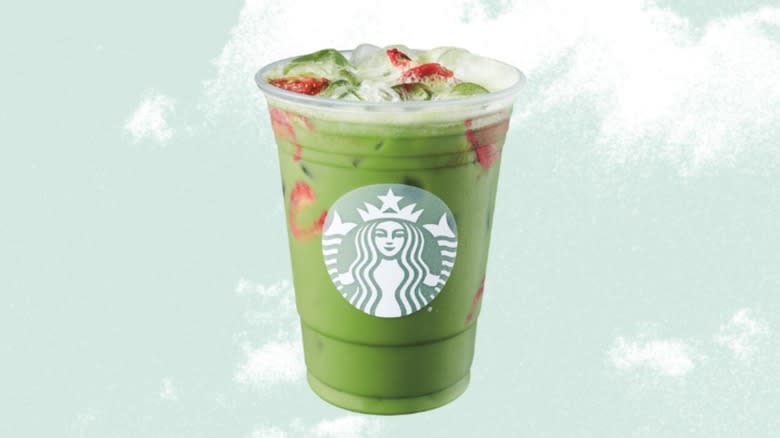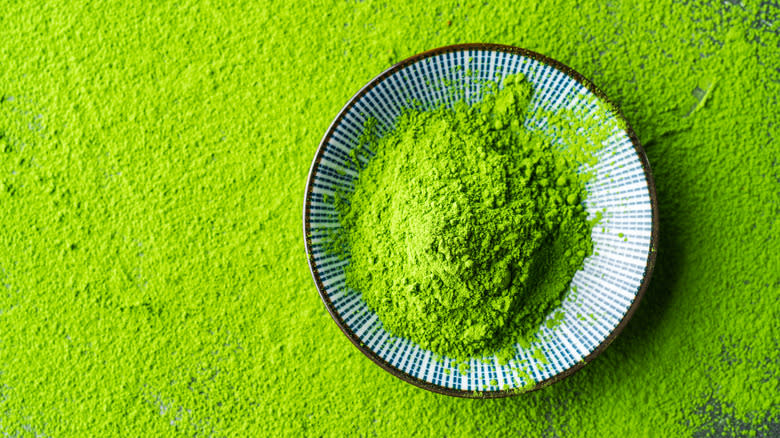The Type Of Matcha Starbucks Uses May Not Be What You Expect

It's possible that the first time you heard of matcha was when you tried it at Starbucks back in 2006 when the chain launched its Green Tea Latte. Over the past 25 years, sales for this caffeinated, grass-colored powder have climbed to over $10 billion in the U.S., according to Global Edge, so it's likely you've dabbled in different types by now. But if you still find yourself reverting to Starbucks' array of matcha drinks, which have now expanded to include a Matcha Crème Frappuccino and Iced Matcha Lemonade, your palate may be able to tell that the powder the chain uses isn't quite the same as in other coffee shops.
What Starbucks calls its "matcha powder scoops" are essentially a sweetened blend, featuring sugar as the first ingredient and ground Japanese green tea as the second. Allegedly, the U.S. blend contains more sugar than tea (while Canada's is supposedly unsweetened). Technically, you wouldn't call this mixture straight matcha, since the powder traditionally just consists of finely ground green tea leaves. As for where Starbucks sources its green tea from, the answer is murky -- the chain may make its own powder with Japanese products, although some speculate it overlooks crucial steps that are needed for true matcha, including shading the tea leaves. Because of this difference, it's possible that Starbucks' powder is actually sencha, which comes from green tea leaves exposed to sunlight.
Read more: 15 Boba Flavors, Ranked Worst To Best
Starbucks' Matcha Scoops Are Pre-Sweetened

If you're trying to recreate Starbucks' matcha beverages at home, note that a mixture of the powder and milk will likely end up less sweet than what you'd get in the store. You may not see sugar mentioned as one of the components in the chain's Matcha Tea Latte -- it only shows milk, milk foam, and the green scoops -- but as we mentioned, your drink will still taste sweet due to the sugar in the tea blend. If you omit a sweetener from your latte at home, you'll likely get a much earthier flavor, but you can amp up the sweetness by adding coconut sugar, honey, or maple syrup.
The quality of a matcha latte also comes down to the type of powder you use. The cream of the crop is ceremonial-grade powder, which comes from the first harvest of the leaves, followed by culinary grade from the second harvest. Since Starbucks incorporates its matcha in a blend, it may not be using the highest-quality version. But if you're whipping up lattes at home, look for a ceremonial-grade tin with only one ingredient that sources its leaves from Japan, which means the powder will be brighter and fresher-tasting. And if you do venture into Starbucks to get your green tea drinks, just keep in mind that any matcha beverages will come pre-sweetened.
Read the original article on Tasting Table.

 Yahoo Sports
Yahoo Sports 
